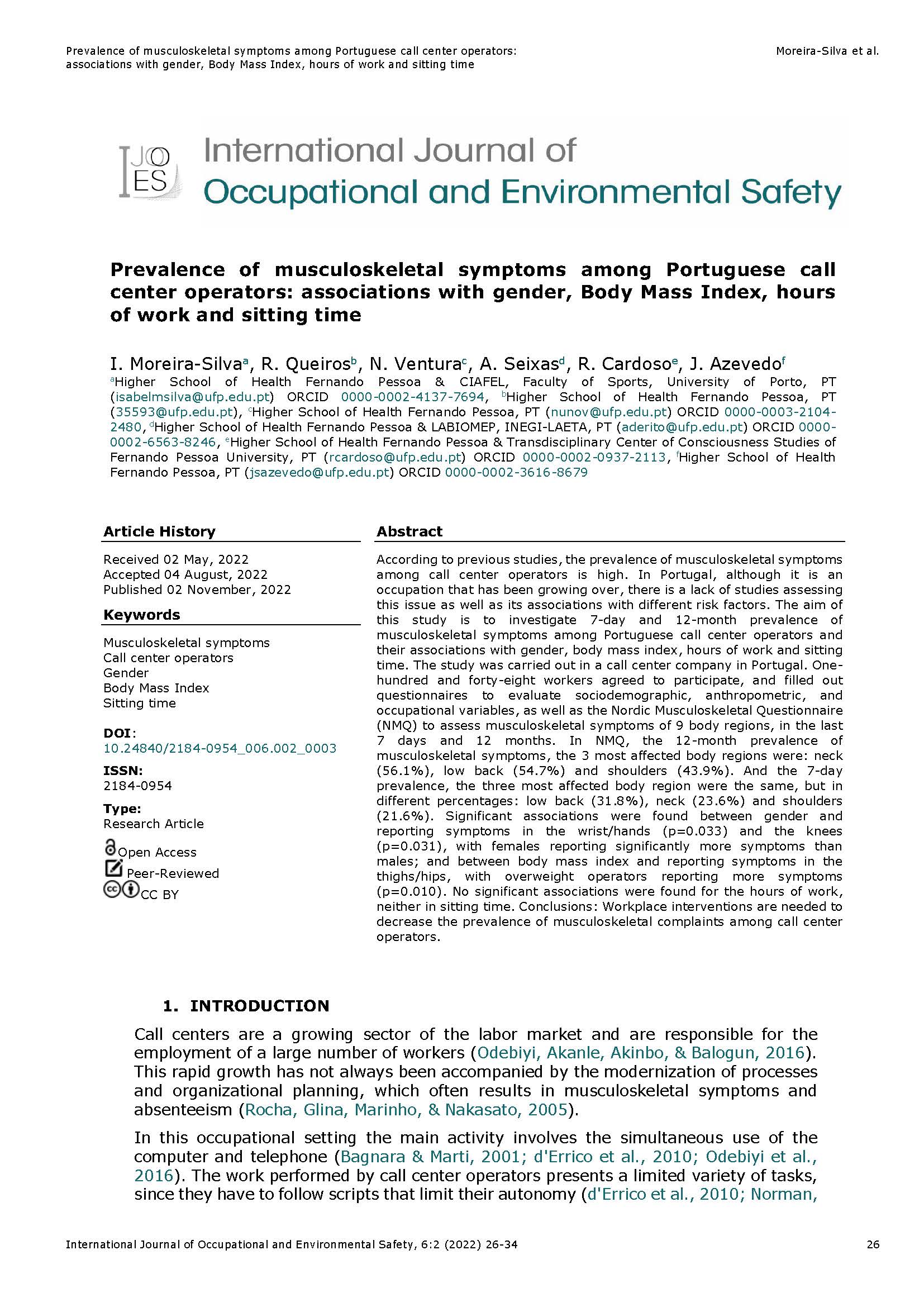Prevalence of musculoskeletal symptoms among Portuguese call center operators: associations with gender, Body Mass Index, hours of work and sitting time
Main Article Content
Abstract
According to previous studies, the prevalence of musculoskeletal symptoms among call center operators is high. However, although this is a developing occupation in Portugal, there is a lack of studies assessing this issue as well as its associations with different risk factors. Therefore, the aim of this study is to investigate the 7-day and 12-month prevalence of musculoskeletal symptoms among Portuguese call center operators and their associations with gender, body mass index, hours of work and sitting time. The study was conducted in a call center company in Portugal. One-hundred and forty-eight workers agreed to participate, and filled out questionnaires to evaluate sociodemographic, anthropometric, and occupational variables, as well as the Nordic Musculoskeletal Questionnaire (NMQ) to assess musculoskeletal symptoms in the last 7 days and 12 months of 9 body regions. NMQ revealed the 12-month prevalence of musculoskeletal symptoms, the 3 most affected body regions were the neck (56.1%), the low back (54.7%) and the shoulders (43.9%). And the 7-day prevalence, the three most affected body region were the same, but in different percentages: low back (31.8%), neck (23.6%) and shoulders (21.6%). Significant associations were found between gender and reporting symptoms in the wrist/hands (p=0.033) and the knees (p=0.031), with females reporting significantly more symptoms than males; and between body mass index and reporting symptoms in the thighs/hips, with overweight operators reporting more symptoms (p=0.010). No significant associations were found for the hours of work, neither in sitting time. Conclusion: Workplace interventions are needed to decrease the prevalence of musculoskeletal complaints among call center workers.
Article Details

This work is licensed under a Creative Commons Attribution 4.0 International License.

